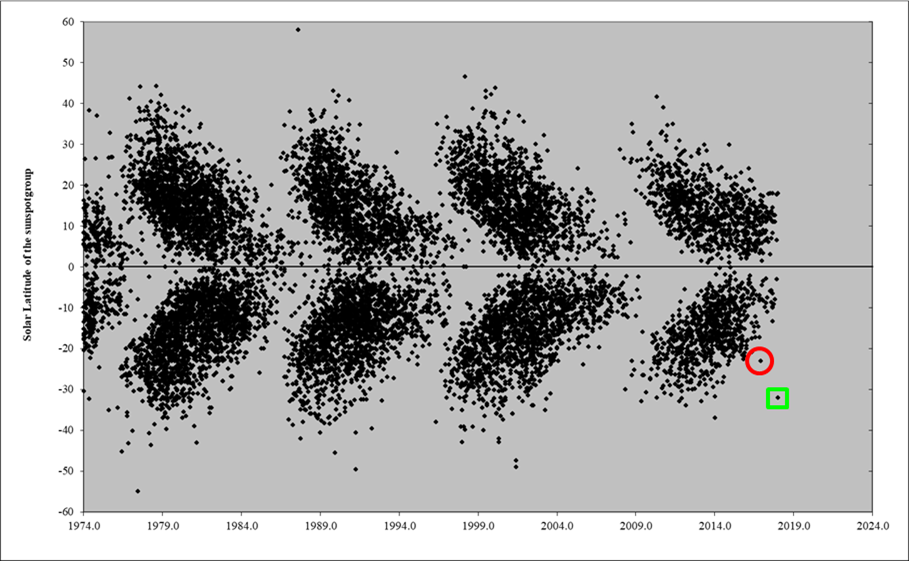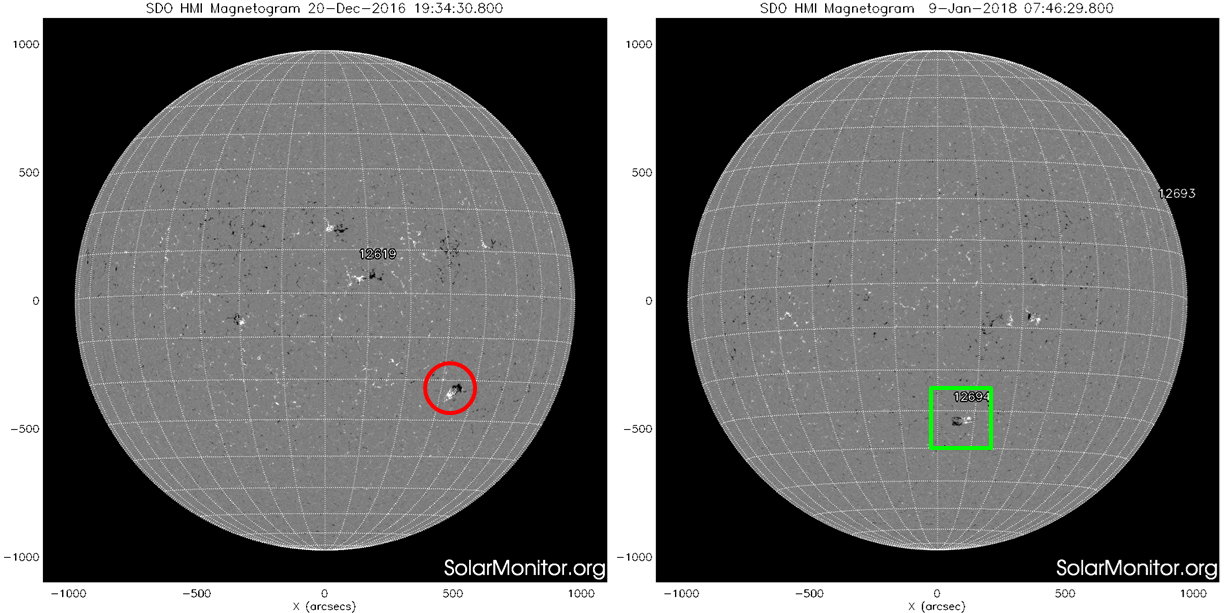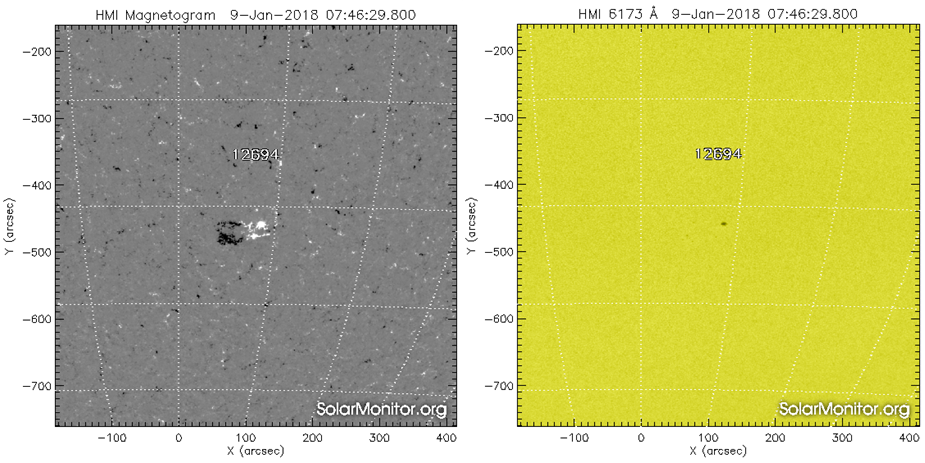It is a well-known feature of a solar cycle that its first sunspot groups appear at high solar latitudes. These sunspots appear around 25-30 degrees away from the solar equator about 10-20 months prior to the solar cycle minimum, i.e. before the start of the new cycle. As this new solar cycle further unfolds, the sunspot groups gradually appear closer to the solar equator, with -during maximum- a heliographic latitude of about 15 degrees. As the solar cycle heads for the next minimum, the sunspot groups appear even closer to the solar equator, gradually becoming smaller and disappearing while the sunspots of the new solar cycle manifest themselves again at high latitudes. This movement of sunspots can also be followed in a diagram showing the latitude of sunspot groups over time. As it resembles the wings of a butterfly, it is called a butterfly-diagram (see figure underneath and this news item for more info). It is believed this butterfly-diagram is a manifestation of the solar dynamo, but the precise mechanism still eludes scientists.

Sunspots of a new solar cycle can also be recognized by their magnetic polarity, which is opposite to that of the ongoing ("old") cycle. Nonetheless, these reversed polarity groups need to have a sufficiently high latitude too , because it has been shown that during a solar cycle, about 3% of all sunspot groups have such a reversed polarity, probably a consequence of the dynamics inside the Sun (see this news item for more info and examples).
When in December 2016 a reversed polarity group appeared in the southern solar hemisphere at a latitude well beyond 20 degrees, it was considered as the first group of the new solar cycle (SC25; see this news item for more info). The magnetogram, revealing the magnetic polarities of the sunspot groups, can be seen underneath left. The sunspot group was numbered as NOAA 2620 and appears as a red encircled dot in the butterfly diagram above. As can be seen, this dot is still relatively close to the southern "wing" of the ongoing solar cycle (SC24), so there is a small possibility that this region was actually a reversed polarity region.

No high-latitude regions appeared in 2017 until 8 January 2018, when a small sunspot group NOAA 2694 appeared with a latitude of -32 degrees. That's a perfect latitude for a new cycle region, but... there was a caveat! Indeed, the sunspot region had the *same* magnetic polarity as the sunspot groups on the southern hemisphere of the *old* solar cycle (SC24; see the magnetogram above right). In the butterfly diagram, this sunspot group is highlighted as a dot embedded in a green square. Clearly, this dot suggests much better that the group is part of the tip of the southern "wing" of upcoming SC25, it's just too bad that the magnetic polarity is still that of the ongoing solar cycle. So, is this region indeed a SC24 group with an exceptionally high latitude at this phase of the cycle, or is this region a genuine SC25 group which happens to have a reversed polarity (3% chance)? Time will tell, but for now it remains a sunspot oddity.






